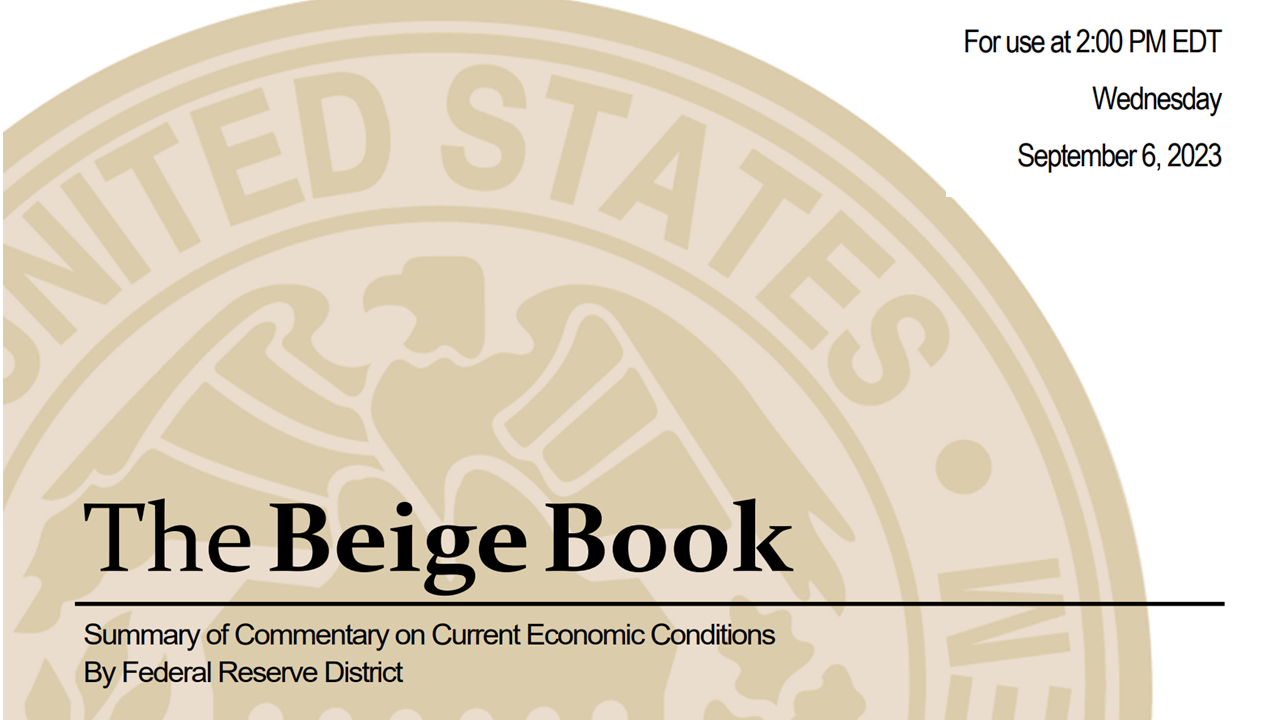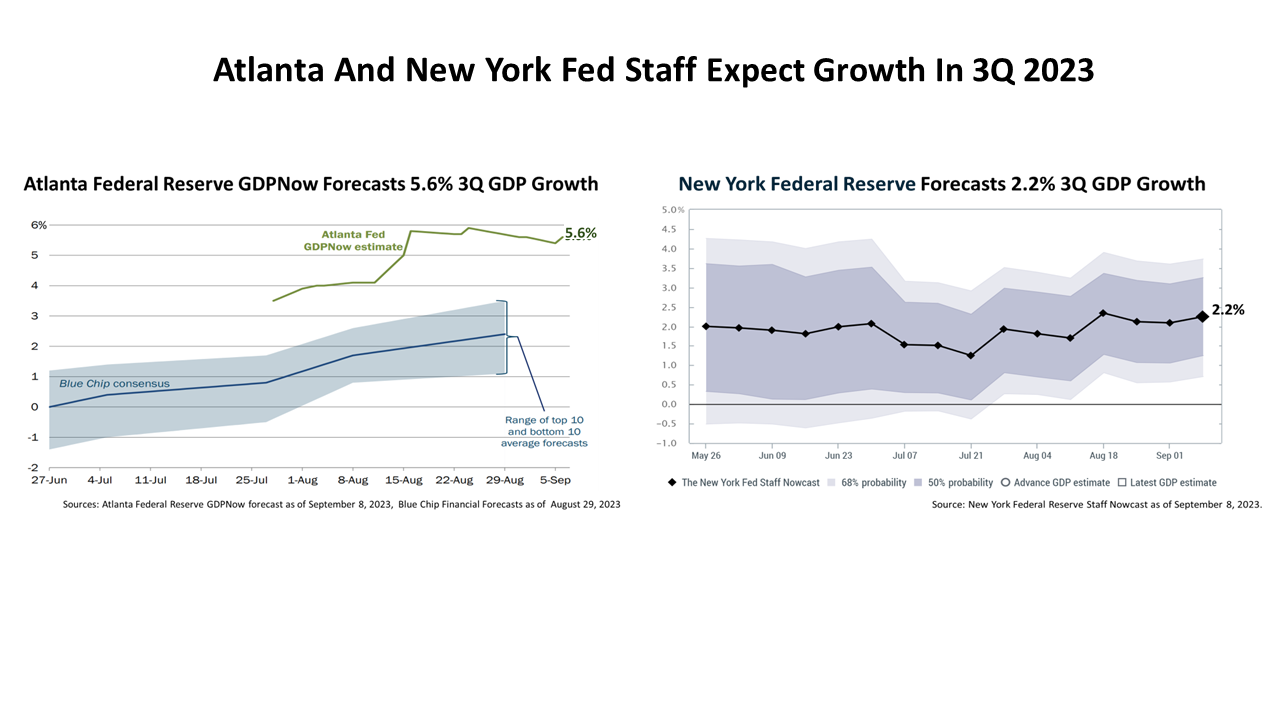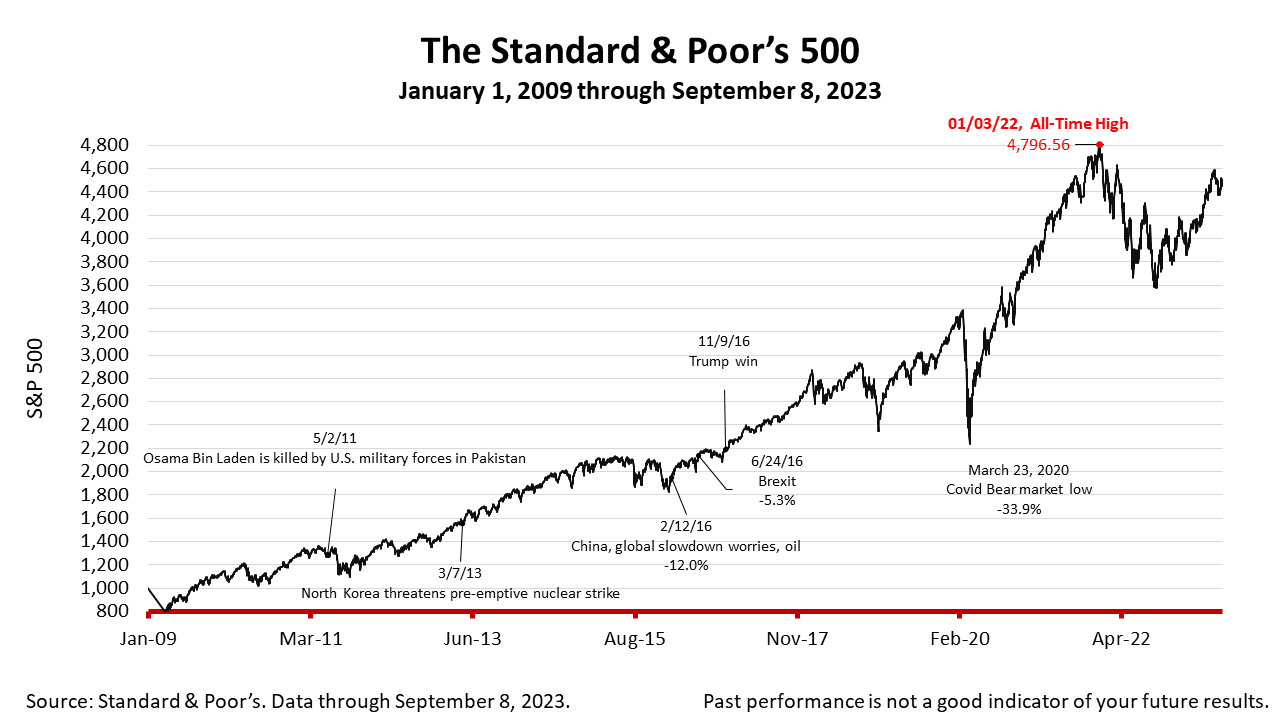Growing evidence of a slowing economy and a sharp rise in the 10-year U.S. Government bond yield sent stock prices lower this past week, but no recession is on the horizon and growth prospects remained bright. Job growth slowed in July and August, and inflation is coming under control but not where the Federal Reserve would like yet. The Federal Reserve’s latest assessment of the economy, released Wednesday, was a mixed bag of good and bad news, and the stock market dropped. The yield on the U.S. 10-year Treasury note rose to 4.3% putting pressure on U.S. stocks. Higher yields make the reliable government-backed income on bonds more attractive versus stocks, which are riskier and not government-backed.
The Beige Book is a Federal Reserve publication about current economic conditions across the 12 Federal Reserve Districts. It’s based on interviews and online questionnaires completed by businesses, community organizations, economists, market experts, and other sources curated by the staff at the Fed Districts. The Beige Book is published eight times a year, about two weeks before meetings of the Federal Open Market Committee ((FOMC), which decides U.S. monetary policy. The FOMC meets next on September 19-20 and is not expected to raise the Fed funds rate because of signs that its 12 hikes in rates since March 2022 are now slowing the economy and reducing inflation to its target rate of 2% annually.
The September 6 Beige Book said economic growth was modest during July and August. Consumer spending on tourism was stronger than expected, surging during the last stage of pent-up demand for leisure travel that followed the pandemic. However, other retail spending continued to slow. Fed branches reported the inventory of homes for sale remained constrained and new construction activity picked up for single-family housing. Multiple Fed districts reported construction of affordable housing units was increasingly challenged by higher financing costs and rising insurance premiums.
Job growth was subdued across the nation. Though hiring slowed, most Districts indicated imbalances persisted in the labor market as the availability of skilled workers and the number of applicants remained tight. Although growth in labor costs was elevated during the first half of 2023, nearly all Fed district branches indicated wage growth will slow broadly in the near term.
Price growth slowed overall, but several Fed branches reported sharp increases in property insurance costs in recent months. Businesses struggled to pass along higher costs, result in lower profit margins in several Districts.
Staff economists of the New York and Atlanta district branches of the Federal Reserve System both offer forecasts of current economic growth based on algorithms that are updated whenever new data on fundamental economic factors are released. Today both the Atlanta and New York districts issued new forecasts for growth of gross domestic product in the current quarter, which ends September 30. The Atlanta Fed’s algorithm is predicting a growth rate of 5.6%, higher than in many years, while the New York Fed predicted a 2.2% growth rate for the third quarter. That the Fed empowers independent thought publicly with the differing forecasts from its district bank branches is praiseworthy. It demonstrates the Federal Reserve’s commitment to transparency and public education. However, the large gap between the two forecasts shows just how hard it is to predict the future of the economy. For investors, the key takeaway is that both forecasts are positive, and no recession is in the forecast.
The Standard & Poor’s 500 stock index closed Friday at 4457.49, up +0.14% from Thursday, and down -1.29% from a week ago. The index is up +99.23% from the March 23, 2020 bear market low and down -7.07% from its January 3, 2022, all-time high.
The Standard & Poor's 500 (S&P 500) is an unmanaged group of securities considered to be representative of the stock market in general. It is a market-value weighted index with each stock's weight proportionate to its market value. Index returns do not include fees or expenses. Investing involves risk, including the loss of principal, and past performance is no guarantee of future results. The investment return and principal value of an investment will fluctuate so that an investor's shares, when redeemed, may be worth more or less than their original cost. Current performance may be lower or higher than the performance quoted.




